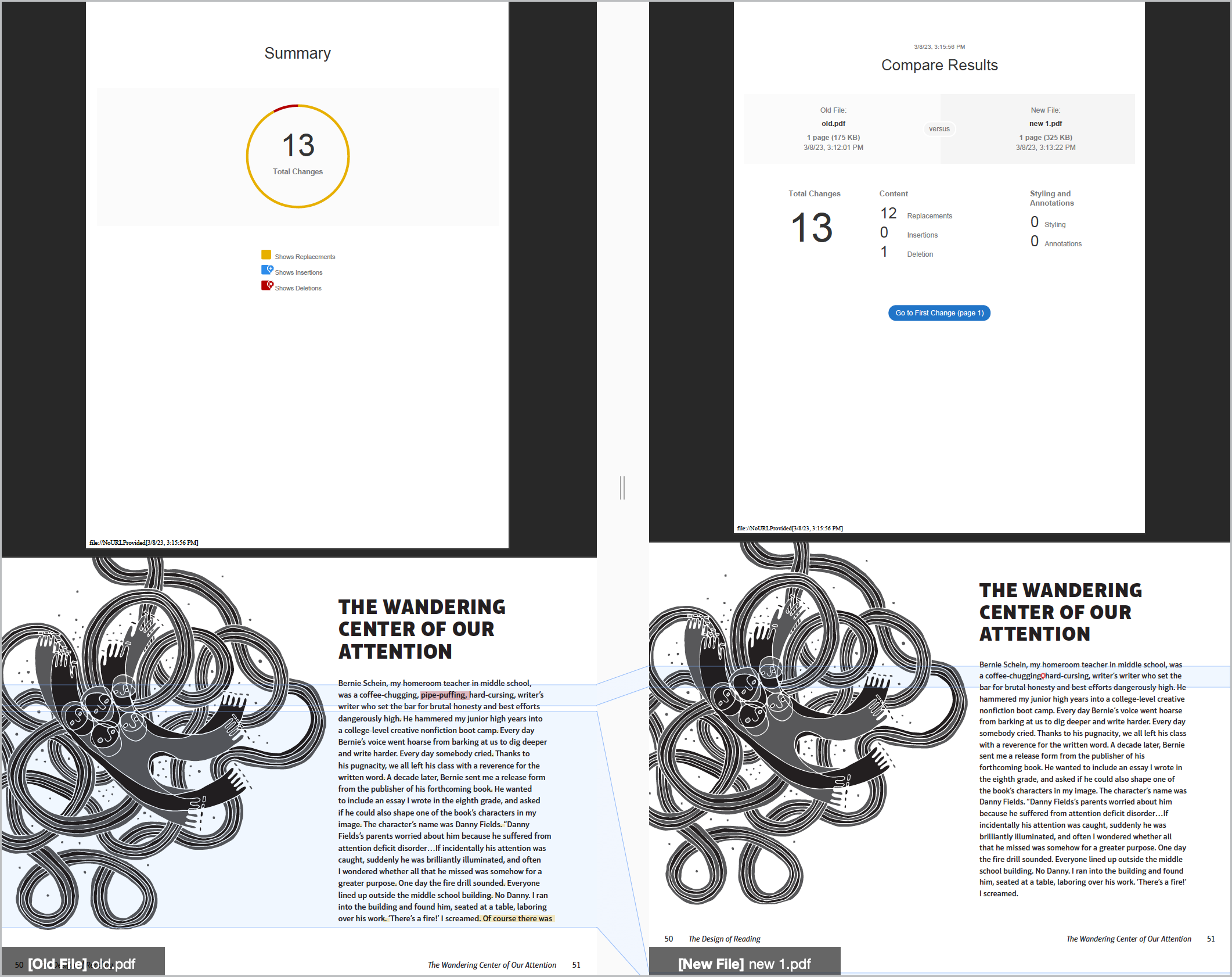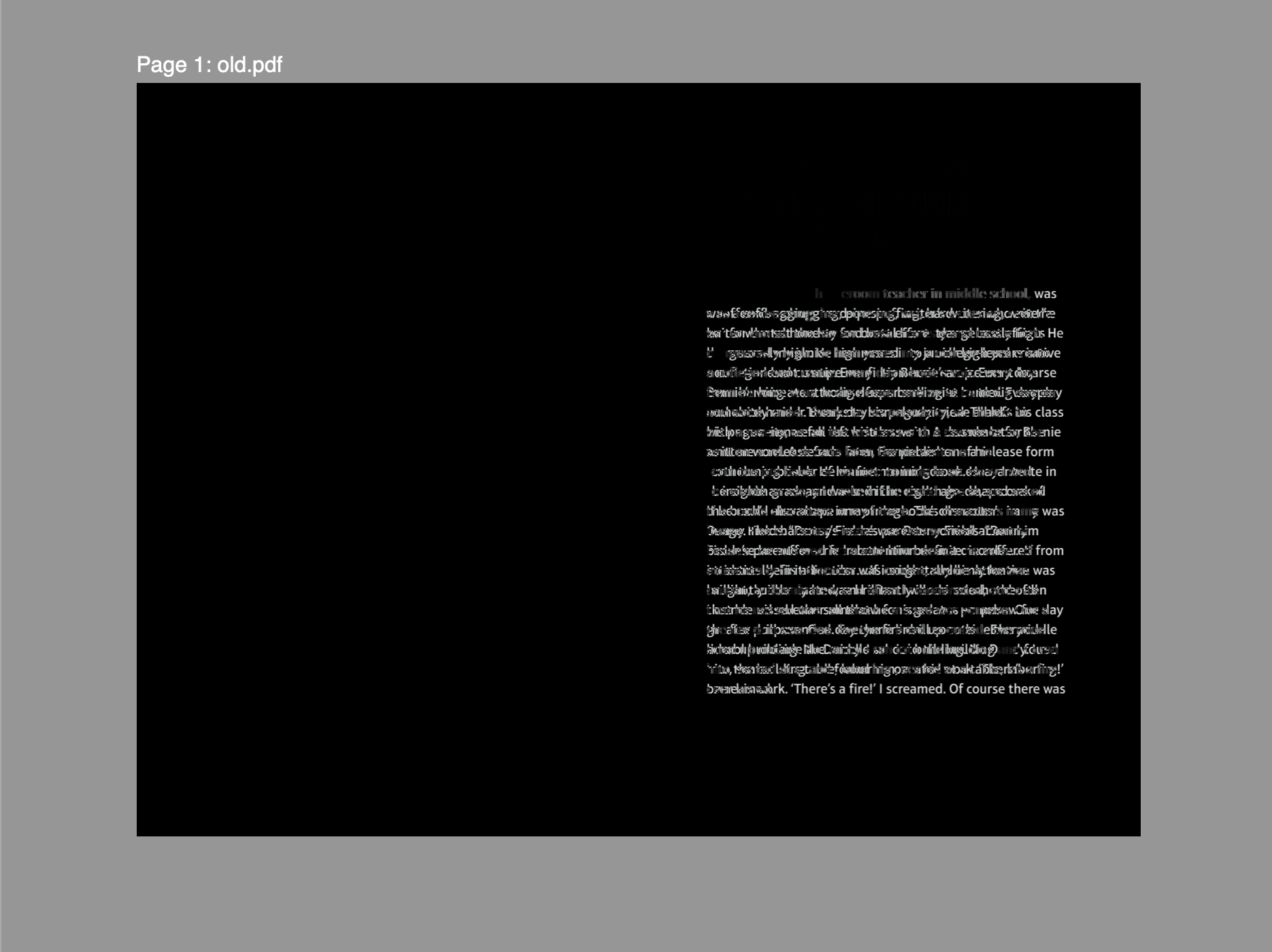Case Study: Brian LaRossa
As an executive art director for a sizable publishing house I'm responsible for overseeing the illustration and design of more than fifty children's books per year. Quality control is perpetually a pressing concern. We do partner with in-house and offsite prepress teams, and with printers all over the world, to make sure our books print correctly, but ultimately it’s my responsibility to approve the printer proofs we receive.
Quality control is all about comparing the PDFs we approved in-house to the soft-proof PDFs the printer has prepared for press. Things shift during that preparation process, for a wide range of reasons, and more often than you might imagine. The goal then, when reviewing soft-proofs, is to spot any difference between the PDFs, which can feel like hunting for a needle in a haystack.
 Screenshot of Acrobat's comparison mode.
Screenshot of Acrobat's comparison mode.
The challenge in automating soft-proof checks stems from the fact that we route PDFs set up as spreads with bleeds and crops in-house while the printers send single page PDFs with color bars and their own branding in a slug. Acrobat’s built-in PDF comparison tool can’t compare PDFs which are that different, and it compares them side by side, which is of limited use. Acrobat’s tool is also too sensitive. It flags things which are of no consequence.
 Screenshot of PDF Differ's "difference" mode.
Screenshot of PDF Differ's "difference" mode.
Alternatively, PDF Differ overlays a soft-proof on top of the last approved in-house route and will automatically resolve any spread/single-page bleed/slug differences. It can then display a “difference” overlay effect. Everything that matches between the PDFs shows as black. The slightest differences—even a single comma—jumps out in white. It can also animate a toggle between the two PDFs.
PDF Differ is also much faster. I recently differed a 40-page picture book with Acrobat’s PDF comparison tool and it took 3.5 minutes to generate a report. PDF Differ differed the same book in 14 seconds.
I work with production designers to pre-flight and then release our books to the printer. Those same production designers then manage the proof routing process and relay our in-house notes. Recently I asked the production designers to begin running PDF Differ on all the soft-proofs we receive from the printer before they route them to the in-house team for review. If PDF Differ detects any errors, the production designers add notes to the PDF, calling attention to them. This way, when I review the soft proofs, I can be confident that any deviations from PDFs I approved in-house prior to release have already been detected and flagged for my review.
Adding PDF Differ to my team’s proofing processes has saved us time, effort, and has reduced the number of printer errors in our books to near zero.